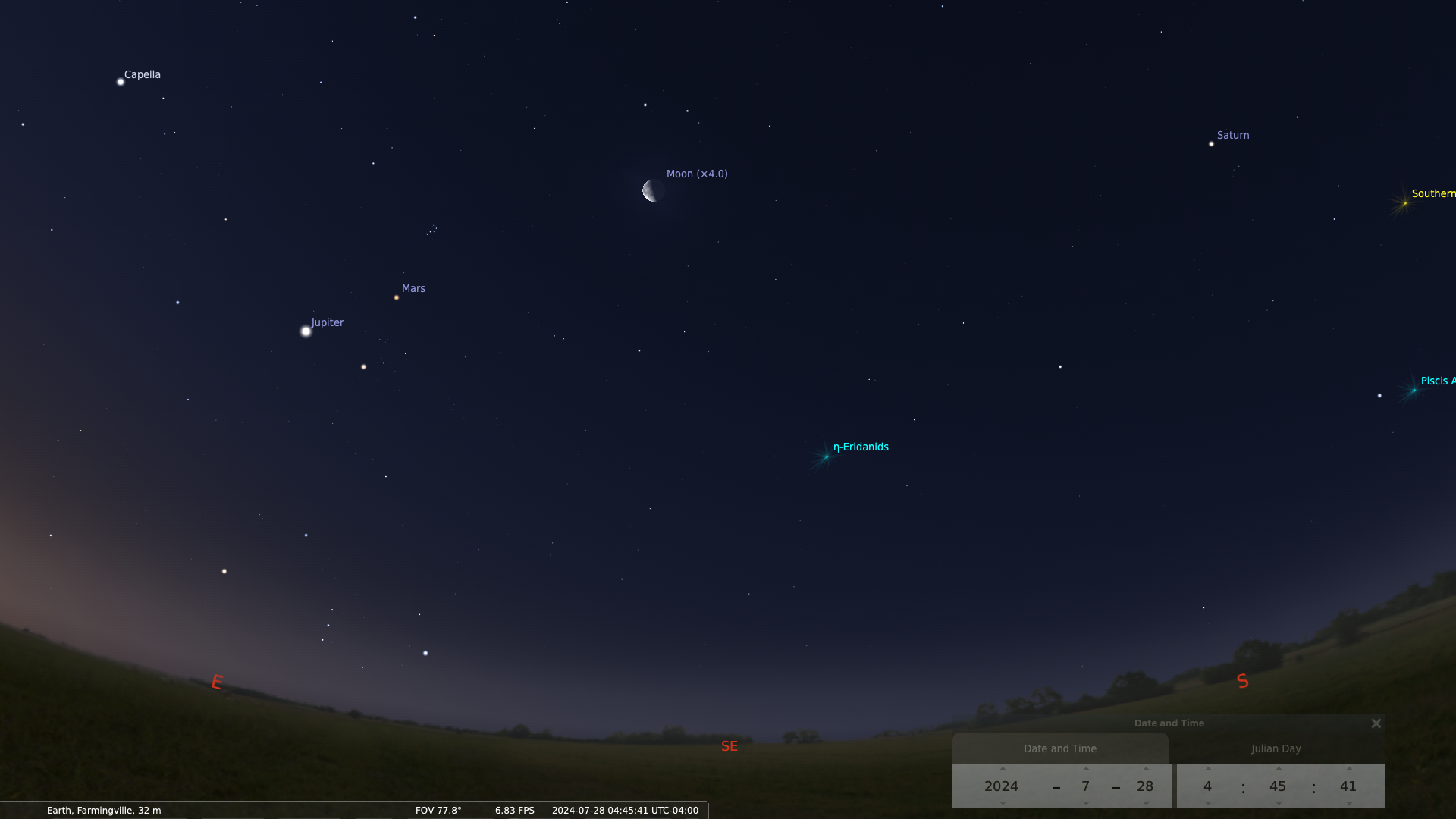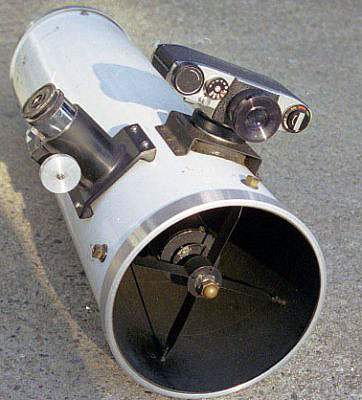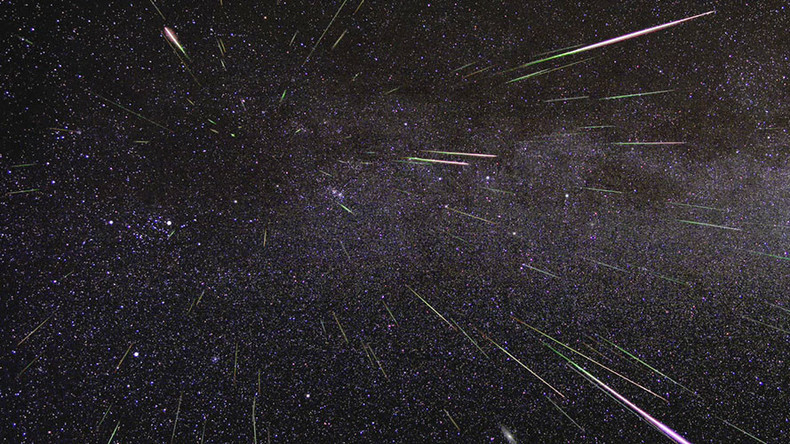
View to the south at 9:30 EDT, Saturday, July 27. Front and center is the Milky Way’s Galactic Center, the familiar “Teapot” of Sagittarius with Scorpio and its heart Antares due west.
The Late Summer
As the summer wanes on, the hallmarks of the season are now front and center, clearly visible in the early evening view above. In the stunning view below, Orion is rising with the third-quarter moon and the major planets in the pre-dawn hours, all preceding the sun before it’s rising.
Stellafane, 2024
Stellafane, the Mecca for amateur and professional astronomers alike, has scheduled their annual meeting this year during the weekend of August 1–4 to coincide with the New Moon. Every year since 1923, the year it was founded by Russell W. Porter and the Springfield Telescope makers, astronomers of all stripes converge on Breezy Hill, Springfield, located in southern Vermont’s Green Mountains. Considered by many in the US Northeast to be the high-point of the year, the convention begins this year on Thursday, August 1st.
Many events follow, including the Friday night talks and a weekend of observing under the dark Vermont skies. With a broad, new and diverse variety of telescopes every year, many get to show off their skills as master opticians and mechanical wizards, producing exquisite telescopes and optical masterpieces.
This author won first place for optical excellence at Stellafane in the mid-1970s for crafting the primary mirror of his 15-centimeter (6-inch) telescope. Many images featured on this site were produced by this telescope, such as the moon, featured in the previous post. In the view below, the instrument is configured as an astrograph, where the telescope’s optical system is used for astrophotography.
Perseid Meteor Shower, 2024
Six Hour Time Lapse Video Showing the Perseid Meteor Shower’s Radiant Point
This year, one week after Stellafane, is the annual Perseid meteor shower. The Perseids generally occur during the 2nd week of August as the Earth passes through the debris field left behind by comet Swift–Tuttle. The Radiant Point is the imaginary point on the sky the meteors appear to emanate from and represents the path of the earth through the debris field.
This year, the shower peaks with a rate of about 100 meteors per hour on the night of August 11-12. The moon is at first quarter, setting just after 9:00 PM, EDT when Perseus has just risen. You don’t need any special equipment to observe the shower. Keeping track of the rate (date/time/location, etc.) is helpful in predicting how the debris field evolves over time.
Meteor showers occur as the Earth plows through the debris field left behind by a passing comet. In the case of the Perseids, that comet was Swift-Tuttle, named in honor of Lewis Swift and Horace Parnell Tuttle, both independent observers. Swift observed the comet on July 16, 1862, with Horace Parnell Tuttle observing it on July 19, 1862.
Meteors are not “Shooting Stars” and except that they are made from the heavy elements synthesized in high-mass stars, they have nothing to do with stars. Meteoroids are the same objects drifting through space; meteors are the objects we see as they burn up in our atmosphere through frictional heating, and meteorites are the few of them that actually make it to the ground.
Featured Image: 2018 Perseid Meteor shower
Full Sturgeon Moon, 2024
The August 2024 Full Sturgeon Moon is low in the southeast in this view due south at 9:30 PM, EDT, 2 hours after its rising, Monday, August 19th. The teapot of Sagittarius is on the meridian, with Scorpio and its heart, the red supergiant Antares, to the west.
According to lore, August’s full moon is also known as a “Sturgeon Moon”. We’ve written extensively about the lore behind the moon’s names, most of which honor native traditions or coincide with seasonal events. For example, last month’s full moon (July) was the Full Buck Moon since July’s full moon occurs when bucks (male deer) are in full-growth mode. Bucks shed and regrow their antlers each year, producing a larger and more impressive set as the years progress.
August’s moon is named as such since the giant sturgeon of the Great Lakes and Lake Champlain were most readily caught during August.
Additional information on the lore of the moon and its names can be found here and here. It also should be noted that each full Moon name is applied to the entire lunar month in which it occurred, not solely to the full Moon.
A quick, interactive web-based version of Stellarium is available here Tonight's Sky. When you launch the application, it defaults to north-facing and your location (on mobile and desktop).
Astronomy For Change: https://astronomyforchange.org
Did you enjoy this article or like what we do? Why not leave a tip or buy us a Coffee?
Follow Us On Twitter: https://twitter.com/astronomychange
Why not support us on Patreon: https://www.patreon.com/astronomyforchange
Imagination is more important than knowledge
![]()
An index of all articles can be found here.
If you enjoyed this article, please consider supporting us with a modest donation
or through a subscription on our Patreon Page
Membership at Astronomy for Change is Free!







